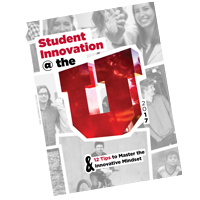Born in Huancayo, Peru, Giulia Soto moved to Utah at the age of five. Her parents speak Spanish and Quechua fluently, which influenced how she navigated the United States K-12 educational system.
“It’s like my parents learned math in a different way,” said Soto, who graduated from the U in 2016 with a double major in business administration and Latin American studies and a minor in Spanish. She is now pursuing a masters at the University of Pennsylvania.
Differences in pedagogical approaches growing up stuck with Soto until she enrolled in the Innovation Scholar program, which inspired her Undergraduate Research Opportunities Program project and honors thesis, titled “Peruvian Immigrant Experiences: Different Learning Cultures and Math Curriculum.”
Her UROP research suggested that more immigrant students should have access to counseling and mentorship for higher education opportunities, as well as appropriate math placement, independent of their English language assessment.
“They learn math in a different way,” Soto said. “They had to learn how to cut out a lot of steps. They can do it faster.”
Giulia’s research involved interviews with Peruvian students in the seventh and eighth grade within the Greater Salt Lake City Area, and provided suggestions to easing immigrant-student transition into the U.S. educational system. She presented her findings at the California McNair Scholars Symposium at University of California, Berkeley.
She discovered that it’s common for immigrant students to be placed into math classes one to two years below their knowledge and experience level. This leads them to be less challenged and unlikely to take advantage of higher education and college preparation opportunities.
More articles like this in ‘Student Innovation @ the U!’
Find this article and a lot more in the 2017 “Student Innovation @ the U” report. The publication is presented by the Lassonde Entrepreneur Institute to celebrate student innovators, change-makers and entrepreneurs.




